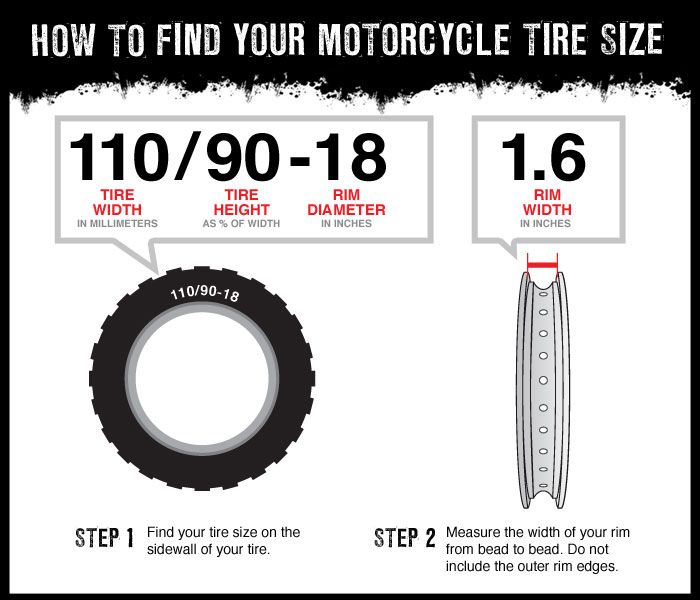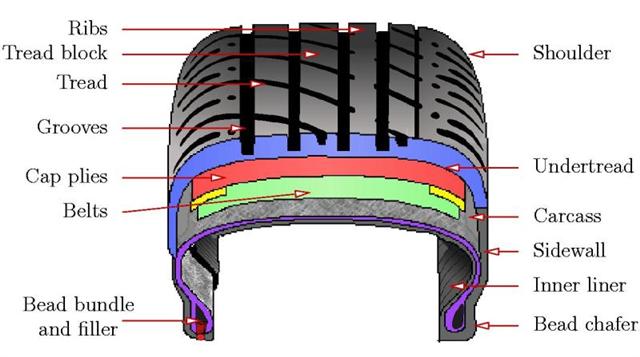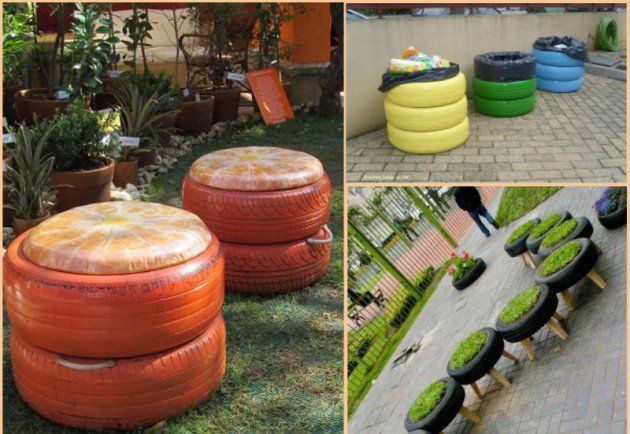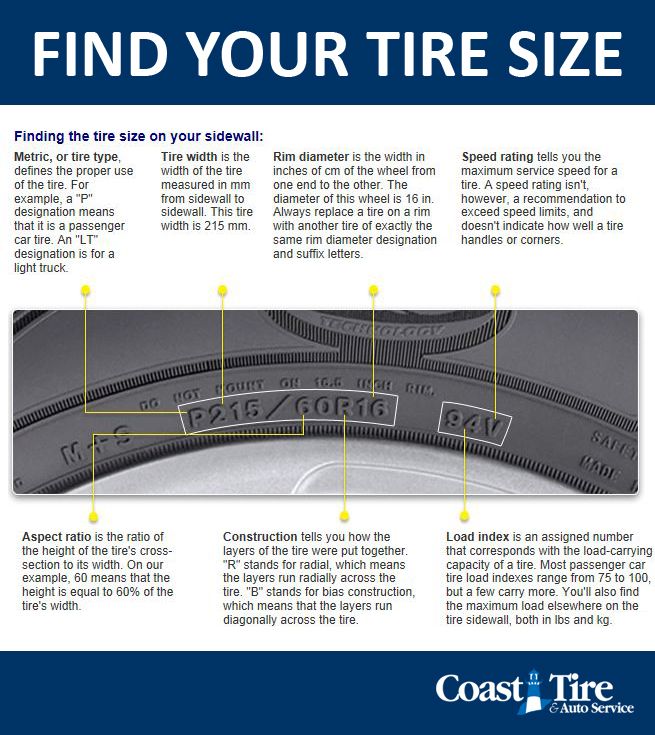Having dull, tired and grey looking tires is one of the easiest ways to ruin what would otherwise be a freshly detailed car. So how do you make your tires look brand new?
It’s actually pretty simple, and doesn’t take too long either. In this article, I’ll take you through the essential steps to make your tires look brand new in under 15 minutes. So let’s get started.
To make brown or dull looking tires look new again, clean them using an all-purpose cleaner or dedicated tire cleaner with a hard bristle brush, then rinse. Wipe with a damp microfiber towel and repeat the process until there is no transfer onto the towel. Dry, then apply a tire dressing.
If you’re tires and looking dirty and tired, then the first step to making them look new again, is to give them a good clean.
This can be pretty hard work, and if I’m honest, it’s one of my least favourite parts of detailing a car. But it is essential if you want your tires to look shiny, and the overall car look much newer.
If you can’t remember the last time you cleaned your tires, then this step make take a little longer than if you maintain them regularly. So here are the steps to deep clean your tires.
If you have a pressure washer , then now’s the time to dust it off and get it out of the garage. If you want to dramatically cut down the time it takes to clean your tires, then the wet wash can help a whole lot.
Use a fan-type nozzle and spray your tires down thoroughly. You can get away with using a pretty powerful setting, but use it at an angle and avoid hitting the paint or alloys to reduce the risk of damage.
 Scrub the Tires with an APC or Dedicated Tire Cleaner
Scrub the Tires with an APC or Dedicated Tire Cleaner Next, you’ll need to give the tires a good scrub. I use a hard bristle brush to do this. Make sure it’s not too wide though that you’re touching the alloys because it will scratch them.
Car shampoo isn’t strong enough to remove the grease and grub on your tires that has built up over time. So I recommend using an all-purpose cleaner designed for cars or a dedicated tire cleaner. Make sure you wear nitrile gloves to protect your skin.
My favourite products for this are:
You’ll want to give each tire a good scrub and then rinse it down again using the pressure washer.
Link to the brush I use: In2Detailing Tyre Brush.Another really great way of getting the grease and grime off your tires, is to use a microfiber towel.
This needs to be an old one that you have absolutely no intention of using for any other purpose. You cannot use the same microfiber towel anywhere else on your car after you’ve used it on your tires.
You cannot use the same microfiber towel anywhere else on your car after you’ve used it on your tires.
Give the tires a good wipe down using a damp microfiber towel and you’ll notice loads of extra dirt getting removed.
Unfortunately, this process can take a while because it needs repeating a few times. Unless your tires have been regularly cleaned, you’ll probably need to repeat this process at least 3 times on each tire before moving onto the next step.
Ideally, you want as little black transfer on your microfiber towel as possible before quitting.
Okay, so now your tires are squeaky clean, you can move onto the dressing step. This is essential to give your car the shiny, wet-look that makes them appear brand new, even when they may be years old. It also protects them from the elements to prevent drying and cracking over-time.
I personally use the Garage Therapy Tyre Serum which is more than just a dressing as it conditions the rubber as well. After the first few times of applying it, I noticed that the tires stayed much cleaner between washes and still repelled water.
After the first few times of applying it, I noticed that the tires stayed much cleaner between washes and still repelled water.
Here is a link to the Garage Therapy /ONE: Tyre Serum.
You can also use a foam or microfiber applicator to apply the product.
Okay, so now you know how to get your tires to look brand new again. Here are some FAQs you may still have about detailing your wheels.
The tires should be deep cleaned using an all-purpose-cleaner or dedicated tires cleaner every 2-3 months on average. Maintenance cleaning is best performed every every two weeks, by using a softer brush and car shampoo, rinsing and wiping with a microfiber towel. Then the tires can be dried and a dressing applied.
Unfortunately, these tire dressings don’t last as long as you might think. Although most tire dressings claim to last up to a month, I’ve found that they last around a week.
The Gtechniq T2 tire dressing lasts around 2 weeks when you prep the surface properly. Whereas the Meguiar’s dressing lasts around 1 week.
You can get the best durability by ensuring the tires are squeaky clean before applying the dressing. This dramatically increases the time they last for. If you apply a dressing to a dirty tire, you’ll be lucky to get a couple of days worth of shine.
Giving your tires a jet wash, and reapplying a small amount of tire dressing each week is generally going to get your tires looking pretty good most of the time though.
The best way to revive tires that have browned, is by rinsing them and cleaning using an all-purpose-cleaner or dedicated tires cleaner and a hard bristle brush, wiping with a microfiber towel, and then repeating around 5 times.
Brown tires can be a pain, but if you follow the steps above, then you should get them looking pretty good again. It’s very hard to get them to look black again without a tire dressing though. Often the browning occurs over time, so if you have new tires, make sure you look after them!
It’s very hard to get them to look black again without a tire dressing though. Often the browning occurs over time, so if you have new tires, make sure you look after them!
So I always recommend a deep clean, followed by the Garage Therapy Tyre Serum which will help to condition the rubber and protect them from browning further.
Thanks for reading! I hope you’ve found this article helpful. Don’t forget to check out the rest of the blog to learn more about getting your car to look it’s best!
You’ve scrubbed your car inside and out and gotten rid of those lingering crumbs and annoying smudges on the windshield — but how are your tires doing? There’s a good chance all that wear and tear on your tires has left them in need of some extra love! Luckily, cleaning your vehicle's tires is easy and can be done in four easy steps.
Your tires are the only part of your vehicle coming in contact with the road. That means they are usually the first thing to get dirty! And while a little dirt won't hurt, what could be hiding underneath the dirt and grime just might — think nails, cracks in the sidewall, and low or uneven treadwear. Follow these four easy steps to get your tires squeaky clean to help you determine if it's time for new tires from Firestone Complete Auto Care.
To start your tire-washing process, you'll need a bucket, microfiber towels, a hose and spray nozzle, and a soft-bristled brush. For a deeper clean, use a light-duty pressure washer, a waxing mitt, and a wheel brush.
Use non-abrasive cleaning agents like dish soap, warm water, and wheel wax. If you’re curious about how to clean car tires naturally, try using a 70/30 mix of white vinegar and baking soda.

After you’ve collected your tools and materials, rinse off all the loose dirt using your spray nozzle or the lowest setting pressure washer (if you have one). Try to work the water from multiple angles — above, below, and both sides — to knock out the most grime from the interior of the rim.
After you've rinsed the tire, scrub the surface thoroughly. Begin with the tires, and move on to the wheels to avoid having tire grime drip onto a clean wheel face. With your bristled brush, scrub the tire with warm water and dish soap (about a tablespoon of soap per gallon of water). For stuck-on grime, let the soap mixture sit on the tire for a few minutes to help soften things up. Then, repeat scrubbing and rinsing as much as you need.
Once your tires are glistening, you can start washing the surface of the wheel. Wet the wheel face, and use your brush with warm, soapy water to scrub everything down. If you want to apply a natural cleaning solution on your chrome wheels, pour equal parts of white vinegar and water into a spray bottle and spritz onto the wheels to melt away stains.
Use a smaller brush to tackle tougher spots on the wheels, then fully dry both the tire and the wheel with a clean, microfiber towel.
While a wax application isn’t totally necessary, it’s the perfect final step to get your tires looking their best. For maximum results, apply a cream or paste wax with a waxing mitt, and make sure to follow the instructions provided on the container. After applying the wax, give it a final polish with a microfiber cloth, and marvel at that amazing shine!
Cleaning your tires is important if you want your car to look its best! Since tires are the only part of your vehicle that touches the road while you’re driving, they can require a bit more TLC than the rest of your ride when it comes to keeping them clean.
Aside from dirty wheels not being aesthetically-pleasing, cleaning your tires is also a great way to limit corrosion or similar damage. Letting dirt and grime hang out too long can cause your wheel finishes to peel and can even make the rims more porous (which could create tire pressure leaks).
Cleaning your tires on a routine, bi-monthly basis can help remove the salt, dust, and oil buildup that are a natural part of driving and keep your vehicle in top shape for years to come.
Paying attention to your tires’ health is essential in helping extend their lifecycle and keeping things running smoothly out on the road. If you’re cleaning your tires and notice that any one of your tires is balding, wearing unevenly, cracking on the sidewall, or has an obstruction, it's time to make an appointment at Firestone Complete Auto Care. We provide expert tire repair, alignment services and can even help you pick out a whole new set of tires for your vehicle! Whatever your vehicle needs may be, our team is here to get your car back on course.
We provide expert tire repair, alignment services and can even help you pick out a whole new set of tires for your vehicle! Whatever your vehicle needs may be, our team is here to get your car back on course.
In 2018, more than 95 million new cars were produced in the world, which is about 380 million new tires. The annual dynamic growth of the vehicle fleet leads to a constant accumulation of worn out tires, the service life of which is relatively short. According to GOST, the average life of rubber is 7-10 years, but given the condition of the roads, tire wear resistance is reduced. In fact, car owners change tires every 3-4 years. +1GOROD (Useful City) decided to find out if the problem of accumulating car tires is really so global.
Photo: Unsplash / "My Life Through A Lens"
In Russia, car tires cannot be thrown into garbage cans, as they are not municipal solid waste. The motorist is obliged to independently hand over the tires for recycling by special organizations. It is easier to do this through tire fitting, but the car service must have an agreement to work with such types of waste. And for the most part, tire shops accept used tires only for money, and car owners are not ready to "pay for garbage". So tires are accumulated where necessary: in the private sector, in car fleets, at industrial enterprises, near tire shops, on the landings of residential buildings.
The motorist is obliged to independently hand over the tires for recycling by special organizations. It is easier to do this through tire fitting, but the car service must have an agreement to work with such types of waste. And for the most part, tire shops accept used tires only for money, and car owners are not ready to "pay for garbage". So tires are accumulated where necessary: in the private sector, in car fleets, at industrial enterprises, near tire shops, on the landings of residential buildings.
According to the Research Institute of the Tire Industry, about 1 million tons of tires go out of service every year in Russia. Up to 60 thousand tons of such waste is generated in Moscow every year. The problem of disposal of used tires is exacerbated by the lack of an organized collection. Nevertheless, the government of the country nevertheless took the first step towards the civilized management of this group of waste. Since January 1, 2019, tire dumping has been officially banned in Russia. As early as 2003, a number of EU countries introduced a ban on burying whole tires, and in 2006, cut them into pieces. The European Union is looking for various opportunities for the systemic recycling of tires. Tire manufacturers not only included the corresponding costs in the cost of a new product, but also took on part of the costs of recycling old tires. The collected funds go to a special fund that subsidizes processing enterprises and creates waste collection points.
As early as 2003, a number of EU countries introduced a ban on burying whole tires, and in 2006, cut them into pieces. The European Union is looking for various opportunities for the systemic recycling of tires. Tire manufacturers not only included the corresponding costs in the cost of a new product, but also took on part of the costs of recycling old tires. The collected funds go to a special fund that subsidizes processing enterprises and creates waste collection points.
A system similar to the European one also works in the USA. There are financial guarantees for recyclers in the country through taxes, and all participants in the recycling market have compulsory licenses.
But the Japanese pay for the disposal of tires out of their own pocket. The country today has a law on waste recycling, according to which every citizen is obliged to personally deliver used tires to collection points.
Of course, there are also negative examples. In Spain, not far from Madrid, in 2016, a landfill almost 12 hectares in size burned for several weeks. The tires on it have been accumulating since 90-s. For more than 20 years, the company that owns the land has not been able to obtain a license to dispose of them. The authorities took up the problem when it turned out that more than 5 million tires had accumulated at the landfill.
Today, one of the largest car tire dumps in the world, Sulabiya, is located in Kuwait, not far from the capital Kuwait City. Sulabiya is visible even from space. The cemetery of old tires covers an area of 60 hectares, and the volume of tires accumulated there is not exactly known. Rubber continues to be brought here, despite the ban of local authorities.
Why is tire dumping damaging both the environment and the economy? Tire landfills occupy huge areas; they are flammable; End-of-life car tires pollute the soil and groundwater, decomposing in the ground for more than 100 years. In addition, in regions with a hot climate, in places where they accumulate, rodents and insects that carry various diseases live and breed, says Konstantin Ivanov, professor at the Moscow State Engineering University.
“Of course, the elimination of waste tire dumps will make it possible to free up significant areas of land occupied by them for their intended use. But the problem is of great ecological and economic importance for all developed countries of the world. Today, the irreplaceability of natural oil raw materials dictates the need to use secondary resources with maximum efficiency,” he says.
In a number of countries, combustible gas released during the heat treatment of tires is used for space heating. Liquid pyrolysis products are used in the production of plastics, and crushed rubber particles become raw materials for asphalt bitumen.
Since 2013, the Environmental Management Fund, with the support of the Ministry of Ecology and Nature Management of the Moscow Region, has been implementing the Tire program. It is part of the separate waste collection system created by the government of the Moscow region.
“In 2018, activists of the movement collected and disposed of 7.9 thousand tons of used tires. This means that every 11th car owner of the Moscow region has contributed to the preservation of the region's ecology and handed over tires for recycling, ”the traffic message says.
One of the main objectives of the project, in addition to identifying unauthorized tire dumps, is to involve service centers and tire shops in the program to receive scrap tires from the public free of charge.
Indeed, tires can be recycled and find a second life: they will become part of roofing materials or bituminous mastics, become a drip irrigation system or rubber crumb in the surfaces of children's and sports grounds. Rubber asphalt is almost three times more wear-resistant than traditional asphalt and has better consumer characteristics: less slippery in rainy weather, does not melt in the heat as usual, and reduces road noise.
Today, in cities with active development of districts, developers necessarily provide a playground. The pace of modern construction may become a prerequisite for launching our own workshop for the production of coatings for street children's complexes, and this niche has not yet been completely filled, says Ivan Avdotiev, director of a rubber crumb coating manufacturing company.
“In Krasnoyarsk, we were among the first to start making rubber flooring for playgrounds. And it quickly became popular. Previously, children's knees and elbows suffered greatly on sites rolled up in asphalt, says Avdotiev. - In fact, there is nothing complicated in production, we just grind old tires, but it is necessary to control the process at all stages. The most difficult thing, especially at the beginning, is collecting tires. But I believe that in a couple of years, motorists themselves will already know what to do with old tires in order to benefit from them both for nature and for themselves.
“Purchasing tire recycling equipment and even manufacturing it are not the biggest challenges facing the industry. The problem is to create the infrastructure and logistics of collection. Here, such projects as Tire in the Moscow Region make a great contribution,” says Sergey Korotkov, director of the UNIDO Center for International Industrial Cooperation in Russia.
It remains to be hoped that the methods of recycling used tires will improve, and the volume of rubber recycling will grow. Indeed, in developed countries, environmental issues and the recycling of materials have long been under the close attention of both the citizens themselves and the authorities. To do this, the service +1CITY (Useful city) marked on his map at 69cities of Russia 251 useful points where car owners can take used tires for recycling or civilized disposal.
Author
Alexandra Maryasova
Timely replacement of worn passenger tires is the key to safe driving at any time of the year. That is why it is worth regularly inspecting the operational condition of the wheels of the car, and in no case delay the complete elimination of bald tires.
Investing in a new set of tires will not only keep your car in good general condition, but also save you from tragic traffic accidents. Undamaged, the original tread pattern will have maximum grip on the road surface, which will eliminate slipping and increase the braking distance on any road.
It is also worth noting that the presence of new tires is a guarantee of the absence of penalties from the traffic police. Representatives of the patrol service are authorized to make claims about tire wear, and collect decent sums of money from negligent car owners in order to motivate road users to monitor the acceptable condition of the wheels.
They can be quite deplorable and very costly. The main negative factor is poor traction. Because of this, the ability to properly control the machine is significantly reduced, the vehicle may not fit into the turn, and even fly off its lane into a ditch or into the oncoming lane.
The second type of risk lies in the constant threat of rupture of a thin tire, even with minimal vehicle load. This situation can lead to a complete loss of control, and a terrible frontal accident.
Also, do not forget that worn tires sometimes cause increased fuel consumption and worsen the aesthetic appearance of the iron horse. By the condition of the wheels, one can safely judge the maintenance of transport, and as a result, the attention and care of the owner.
Almost the same as above. However, many car owners, seeing at least a slight relief on the rubber, or using old tires that have been lying in the garage for many years, believe that they can postpone the replacement and wait for maximum wear, or a seasonal change.
It is also very popular among domestic motorists to purchase used tires, change wheels in places, and install less worn rubber on the drive pair. This option postpones the mandatory purchase for a while, and saves the material resources of the negligent owner.
However, as practice shows, the miser pays twice. The use of tires with medium wear is just as dangerous as the operation of completely bald wheels. Even on a dry road, at speeds up to sixty kilometers per hour, the braking distance with a worn tread can be more than two meters. And this means that in this case it is also advisable to fork out and purchase a new set of tires, which can at any time become a life saver in an unforeseen emergency on the road.
You can do this yourself with the help of a patterned, volumetric or numerical indicator, which are installed on car tires at the manufacturer's factory.
As can be seen from the above, self-monitoring of the operational life of tires is not so complicated. And if you always follow the indicators, you can change the wheels in a timely manner, and enjoy an excellent safe ride, regardless of the time of year.